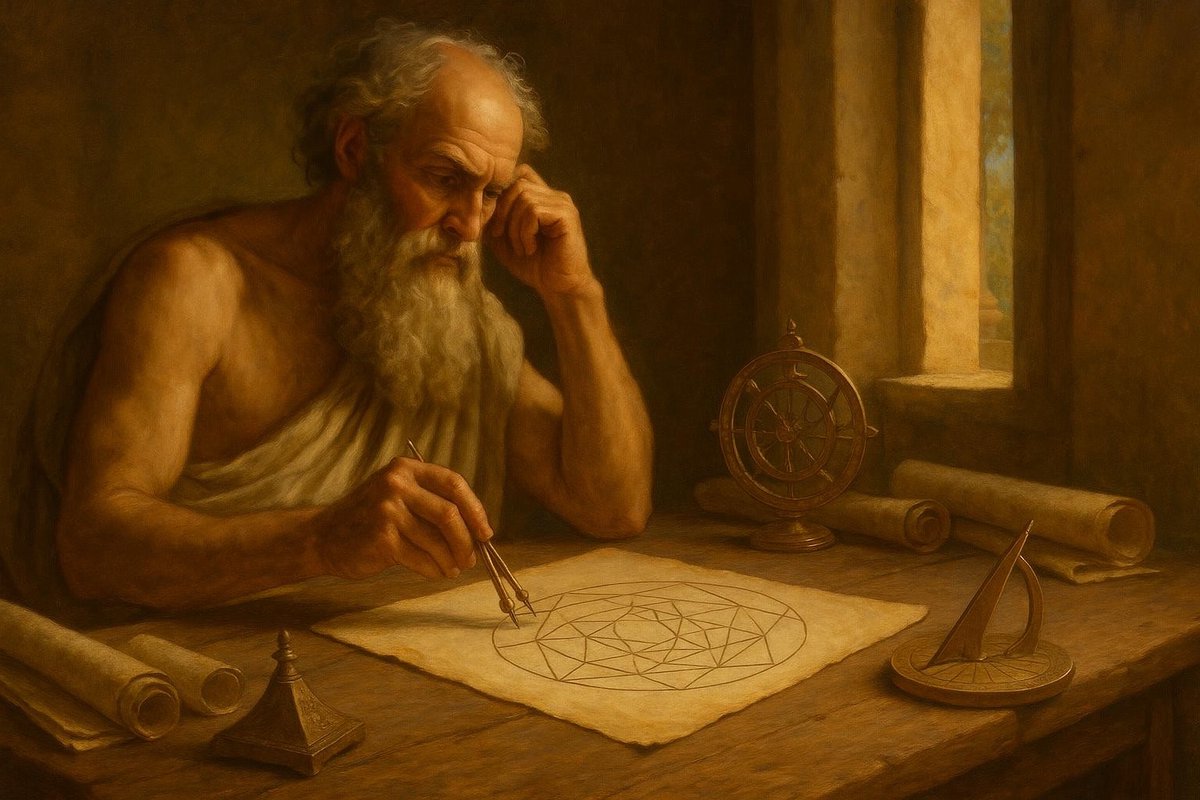
The Circle’s Enigma: The Puzzle Before Pi
Imagine a circle, perfect and endless. How do you measure its mysterious proportions? This question has captivated thinkers for millennia. Interestingly, the idea of Pi arose from such musings. In ancient times, circles symbolized the divine and infinite, inspiring awe and puzzlement.
Before Pi’s discovery, mathematicians were stumped by the relationship between a circle’s circumference and diameter. Observing nature’s curves, they sought a numerical harmony. Yet, their tools were rudimentary, limited to ropes and shadows. It was a riddle waiting to be solved.
- Circles were seen in the heavens, the moon, sun, and wheels.
- The lack of precision in measuring circular perimeters led to intellectual challenges.
- Ancient cultures, like the Babylonians and Egyptians, made attempts but lacked the mathematical language we have today.
These early efforts laid the groundwork for future breakthroughs. Each civilization contributed an understanding, inching closer to the truth. They set the stage for a remarkable journey of discovery.
The Breakthrough: Archimedes’ Insightful Approach
Enter Archimedes, the Greek mathematician whose flair for curiosity was boundless. Many people believe his approach was revolutionary. He took the problem of the circle head-on, developing a method to approximate Pi with unprecedented accuracy.
Using geometry, Archimedes inscribed and circumscribed polygons within circles. He calculated their perimeters, inching closer to a precise value of Pi. His work was meticulous, driven by an insatiable quest for knowledge.
- Archimedes’ method involved polygons with increasing sides, converging on the circle’s actual circumference.
- He famously proved that Pi was greater than 3 1/7 but less than 3 10/71.
- His work demonstrated a deeper understanding of infinity and limits, concepts far ahead of his time.
Of course, Archimedes’ insights didn’t stand alone. His work was supported by earlier thinkers, yet his methods opened doors to new mathematical thinking. His passion and precision set a high bar for future scholars.
The Evidence: Proving Pi’s Universality
Archimedes’ groundbreaking work was further validated by subsequent mathematicians. Hypatia of Alexandria, centuries later, taught his methods, ensuring his legacy endured. As time goes on, each proof strengthened the foundations of Pi’s value.
The quest for Pi was not confined to one culture. Chinese mathematicians, like Zu Chongzhi, refined its calculation, demonstrating its universal allure. Their understanding showed the interconnectedness of global mathematical inquiry.
- Zu Chongzhi calculated Pi to seven decimal places, a significant advancement.
- Medieval Islamic scholars translated and expanded upon Archimedes’ work.
- Pi became a symbol of mathematical unity, its pursuit bridging cultures and eras.
Each discovery illuminated another layer of Pi’s complexity, revealing its fundamental role in understanding the natural world. These efforts solidified Pi as a mathematical constant of profound significance.
Modern Relevance: Pi’s Endless Fascination
Today, Pi still captures our imagination. Its applications are boundless, from engineering marvels to digital encryption. No wonder mathematicians and enthusiasts alike celebrate Pi Day, honoring its endless digits.
Despite technological advances, the essence of Pi remains unchanged. It’s a reminder of humanity’s quest for understanding and the circle’s timeless appeal.
- Pi is used in calculations ranging from cosmology to quantum physics.
- Its digits are computed with ever-increasing precision, yet remain infinite.
- Pi serves as a symbol of the beauty inherent in mathematical exploration.
Ultimately, Pi teaches us about persistence and curiosity. Its discovery is a testament to the human spirit’s drive to unravel the universe’s mysteries.
Fuel Someone Else’s Curiosity
Sharing knowledge is one of the joys of learning. Encourage others to explore Pi’s wonders by sharing this article. Whether you’re a seasoned mathematician or a curious mind, let the story of Pi inspire your journey of discovery.

Leave a Reply